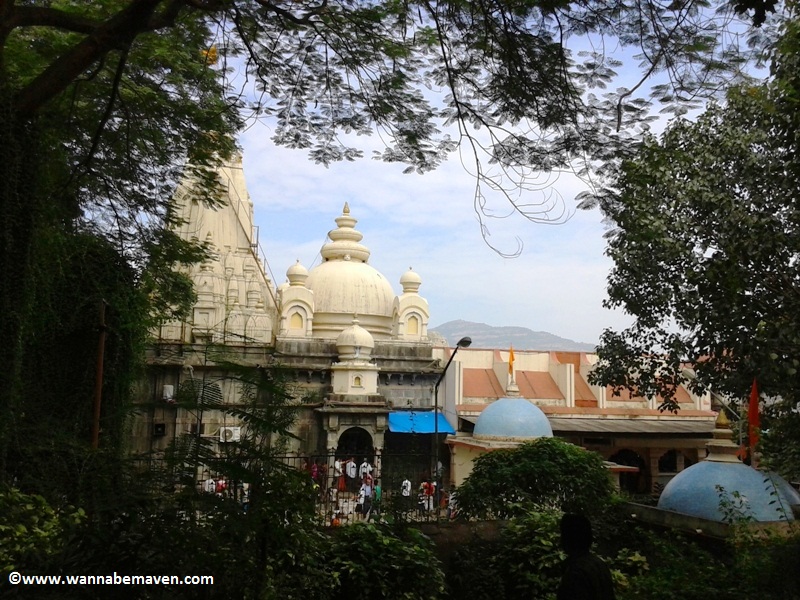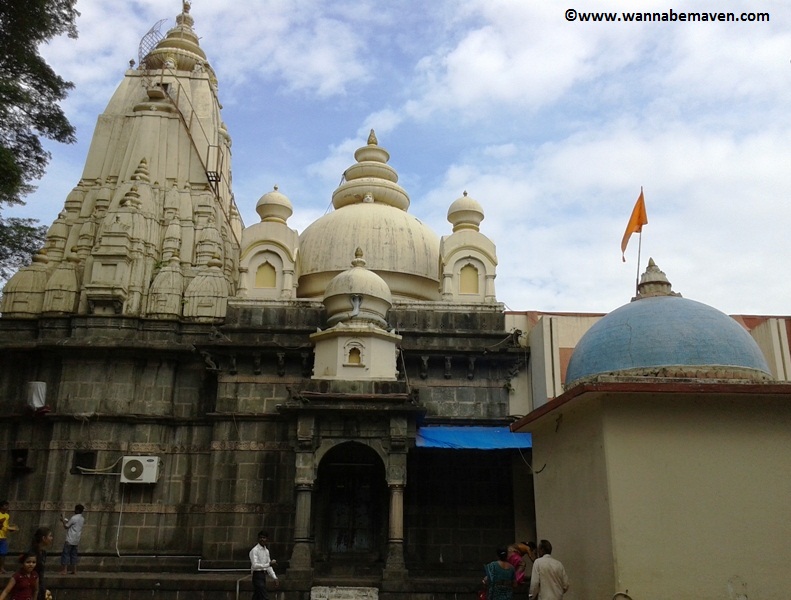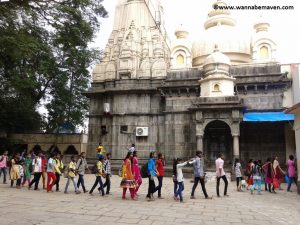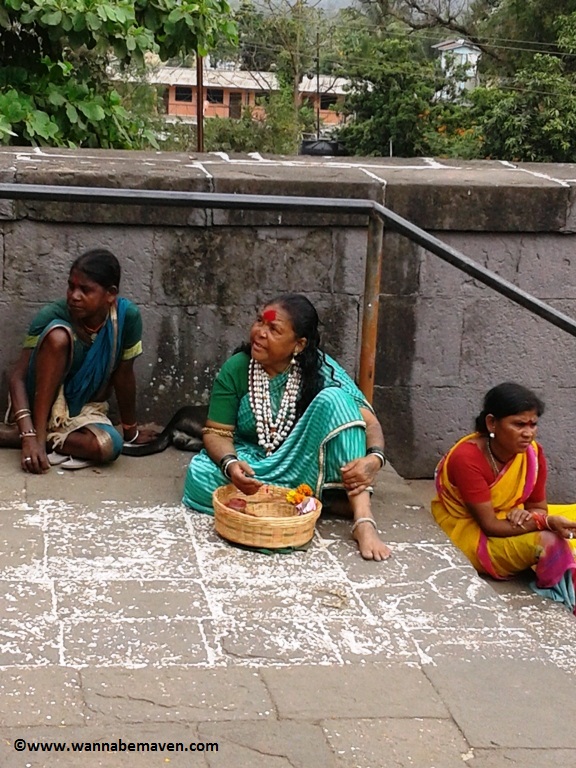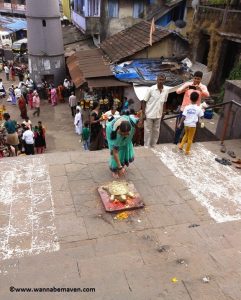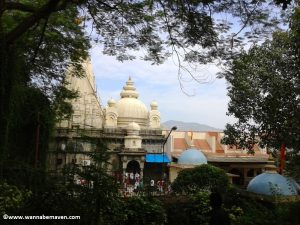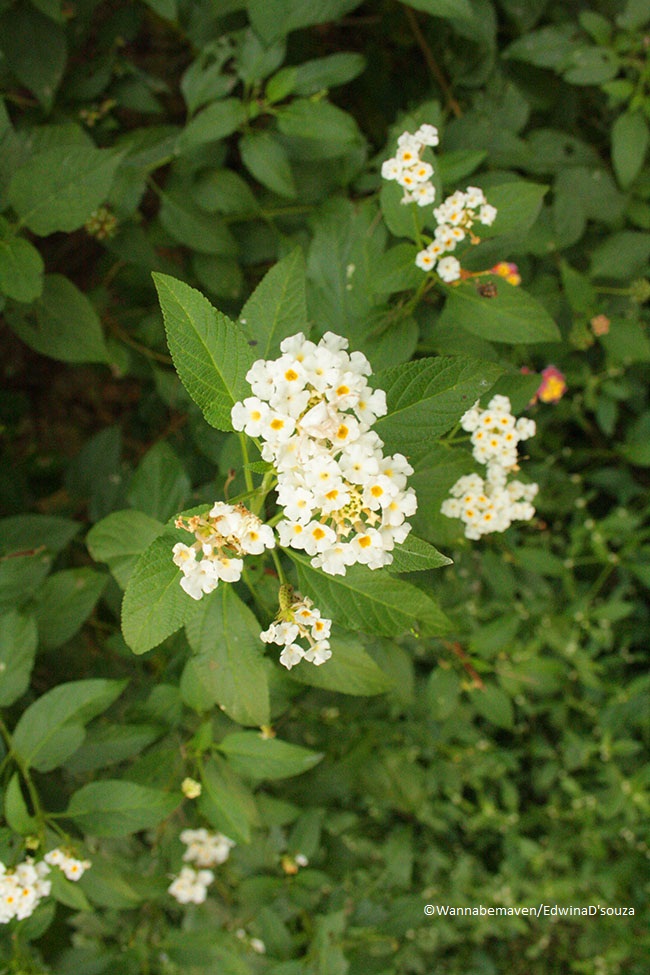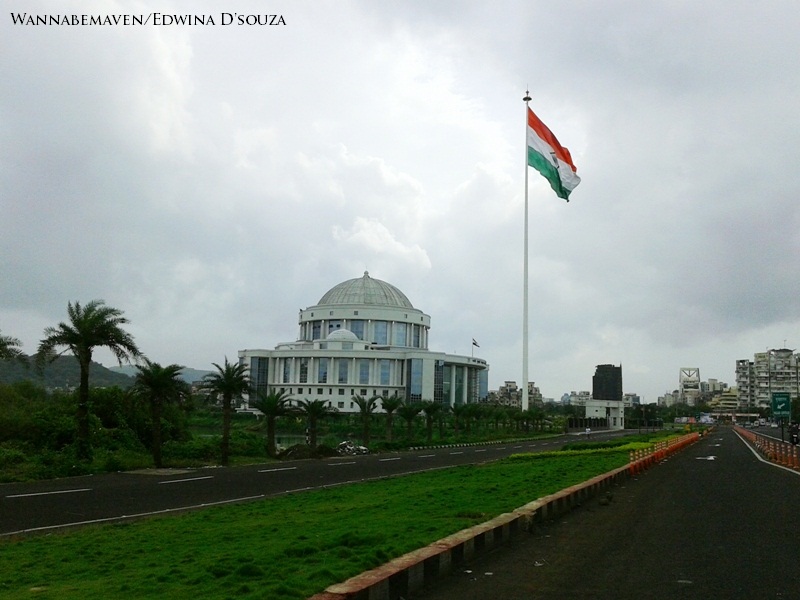I visited Vajreshwari temple a couple of days back and was surprised to learn that the temple shares its history with Bassein Fort, a structure I visited earlier this year.
Located on a hillock on the outskirts of Vasai, Vajreshwari Temple is dedicated to Goddess Vajreshwari – An incarnation of Goddess Parvati.
Vajreshwari Temple on a bright sunny day
It is believed, Maratha ruler – Chimaji Appa ordered construction of Vajreshwari temple as a promise on conquering Bassein Fort from the Portuguese in 1739. Temple was built under the governance of Subhedar Shankar Phadke. Architecture (mainly fortifications) and a towering lighthouse at the entrance clearly draw inspiration from Bassein Fort.
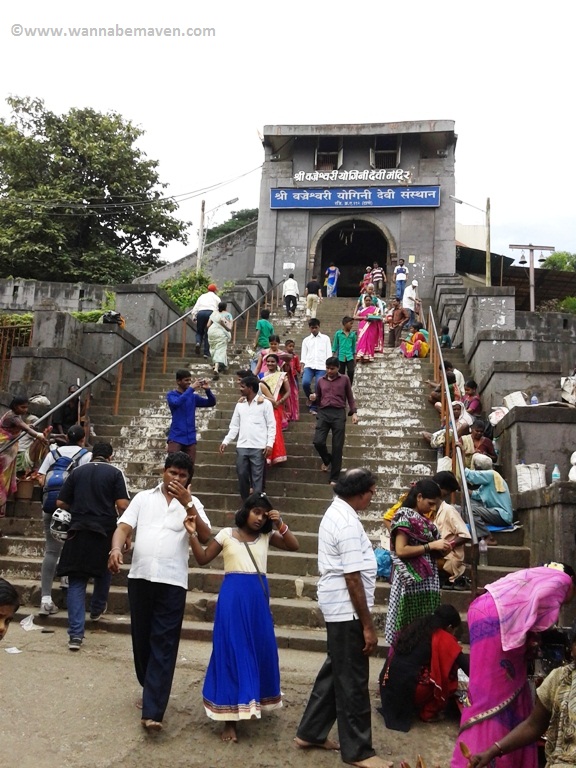 Entrance and fortifications draw inspiration from Bassein Fort
Entrance and fortifications draw inspiration from Bassein Fort
Vajreshwari temple is very popular among Hindus. Even school kids are brought here on excursions. Crowd is an everyday norm, yet there is a certain calm about the place. Although, like most commercialized temples, Vajreshwari has hoards of shops selling garlands, flowers and food, apart from paupers wanting you to offer money. One can only imagine the religious fervor during Navratri when temple is at its festive best.
We arrived at around 10:30am and hung around the place for a good 3 hours. Entrance has a golden stone idol of a tortoise. It is believed to be Kurma, an incarnation of Lord Vishnu as a sea turtle. We saw some devotees burn camphor along the stairway at the entrance. A dangerous thing to do, considering visitors are required to remove footwear before entering the temple.
(Left) Devotees pray to Lord Kurma – The Sea Turtle; (Right) Burning camphor along the stairway to temple
Variety of offerings are made to Goddess Vajreshwari such as flowers, garlands, sarees and colored rice. I even spotted a devotee offer a bird as sacrifice. And some stuck coins inside wall cavities for wishes to be granted.
(Top) Devotees stick coins on walls for wishes to be granted
 (Top) During noons, priest goes around the temple premises spreading arti
(Top) During noons, priest goes around the temple premises spreading arti
Aware of the large amount of crowd the temple attracts, polio vaccination booths were set up to spread awareness among rural population. On a hill-top, few meters away, stands the Samadhi of 17th century saint – Godhadebuwa. He is believed to have seen Goddess Vajreshwari. Hill-top offers a 360 degree view of Vasai and mountain ranges of Maharashtra.
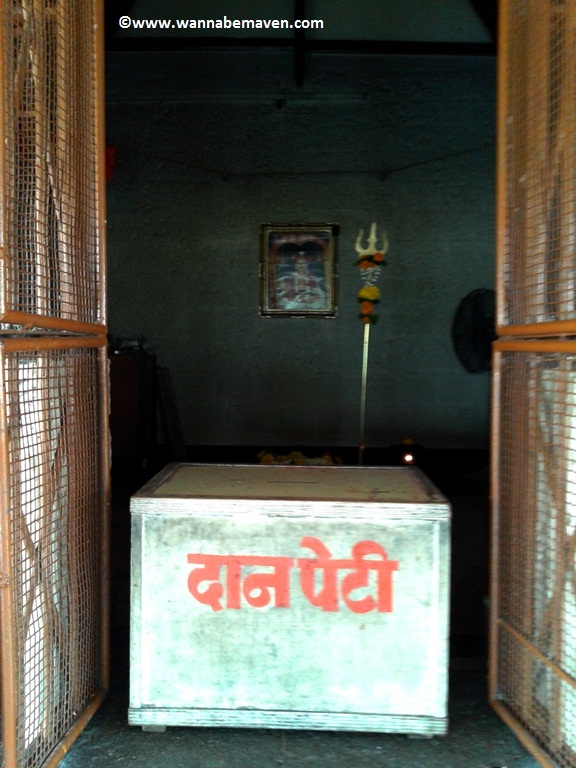 Samadhi of 17th century saint who is believed to have seen Goddess Vajeshwari
Samadhi of 17th century saint who is believed to have seen Goddess Vajeshwari
Vajreshwari Hot Water Springs
While in the vicinity, we decided to visit the seven hot springs of Vajreshwari. My parents always mentioned these hot springs during casual conversations about places to see around Mumbai. Disappointingly, things have changed over the years! I witnessed a site that is dirty, filthy and unkempt.

In an ideal situation, you would expect visitors to dip their feet in these hot springs for the experience. Instead, visitors use it for their so called Holy bath. Some go to the extent of using foamy soaps, making it absolutely impossible for others to even go near the water. The hot springs are known to have sulphur content with healing effects. But, in the current scenario, a dip in this contaminated water might leave you sick. All seven hot springs are occupied for the same reason – bathing. It wouldn’t be wrong in assuming, these springs are a poor man’s (free) Jacuzzi.
Tourists, mostly rural, come from far off places as a weekend getaway. A lake near these hot springs is used to park cars and wash them. Charpai (beds) are placed for drivers to relax and quench thirst with sugar cane juice. Candy man sells cotton candy and toy sellers hover around wanting you to buy cheap plastic toys.
For a place of tourist interest, these hot springs lack security and supervision. Perhaps, if that was around, there would have been some regulation on using the hot springs more sensibly.
In a nutshell…..
As much as I enjoyed spending time at Vajreshwari temple, I was disappointed with the hot springs. I’m pretty sure, a decade or two back, these hot springs must have been an alluring sight and a great attraction for visitors. At least, our elders would claim so! It disappoints me that I might have lost the opportunity to witness such a sight in my lifetime.
Vajreshwari Temple
P.S.
 Bring home Kandi Pede, on sale near the temple. It tastes delicious!
Bring home Kandi Pede, on sale near the temple. It tastes delicious!
How to reach Vajreshwari Temple?
Vajreshwari Temple is 70 km from Mumbai. On the Mumbai-Ahmadabad highway between Vasai and Virar, stay vigilant for signboards to Vajreshwari. Once off the highway, drive is another 16km to Vajreshwari temple. Buses ply to Vajreshwari from Vasai Road station and even Thane.
Hot springs are another a km away from the temple. Locals will easily guide with directions.
**
Like this post? Also check out….
Bassein Fort, Vasai is seeped in History
Banganga – Mumbai’s Mini Ganga
**
Join me on Twitter, Facebook and Instagram for more such travel stories and photographs. I also make cool status updates, just in case you like randomness!
Subscribe to this blog to receive instant notifications of my new posts in your inbox.
